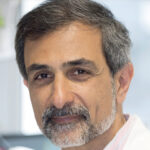Link to Pubmed [PMID] – 20699298
Development 2010 Sep;137(17):2961-71
In vertebrates, body musculature originates from somites, whereas head muscles originate from the cranial mesoderm. Neck muscles are located in the transition between these regions. We show that the chick occipital lateral plate mesoderm has myogenic capacity and gives rise to large muscles located in the neck and thorax. We present molecular and genetic evidence to show that these muscles not only have a unique origin, but additionally display a distinct temporal development, forming later than any other muscle group described to date. We further report that these muscles, found in the body of the animal, develop like head musculature rather than deploying the programme used by the trunk muscles. Using mouse genetics we reveal that these muscles are formed in trunk muscle mutants but are absent in head muscle mutants. In concordance with this conclusion, their connective tissue is neural crest in origin. Finally, we provide evidence that the mechanism by which these neck muscles develop is conserved in vertebrates.

